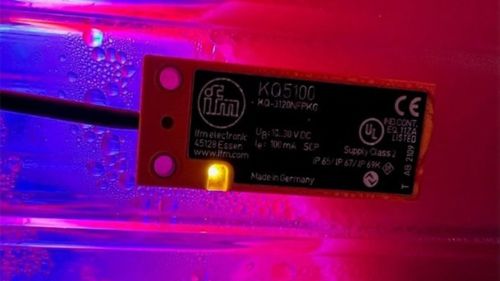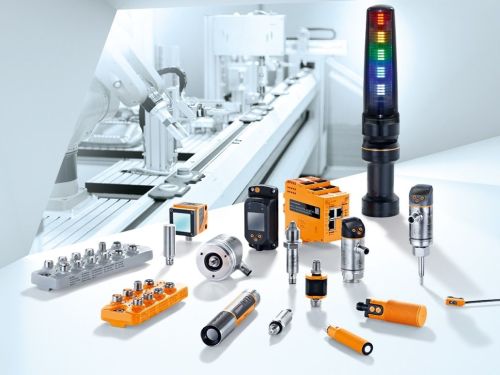ifm spotted: Sweet cooling thanks to ifm

Close-up view of the level sensor from ifm
Slush-Ice machines can be found on almost every corner. If you take a closer look, one thing stands out: ifm is also part of the machines – find out more here.
Whether in the gas station, in the cinema or at festivals – almost everywhere you can find colorful slush-ice machines. First used in the late 1950s and mass-produced from 1960 onwards, these machines have become an indispensable part of modern life. They are particularly popular among young people.
The so-called slush-ice, which the machines contain, is a drink made from flavored ice in liquid form. It comes in a variety of flavors, including strawberry, caramel, watermelon, Coca-Cola and Fanta, and even with or without carbonation. The latter two flavours were discovered by an ifm-colleague at an Esso petrol station in his town and by an ifm-trainee during a visit to the cinema.

Bild 1: Cola-Slushies to go thanks to ifm, Bild 2: Orange sensor in blue slush-ice cream
The production of slush-ice is relatively simple. The machine contains a freezing chamber, which is designed to quickly freeze water. This forms ice, which is then in turn broken up by a continuously rotating agitator and broken up into a soft-grained texture. As the ice slowly freezes and is broken up, it mixes with added syrup to bring about the desired flavor and color. So in the case of the slush machines discovered, the syrup in question consists of Coca-Cola and Fanta to give the drink its flavor.
However, to ensure that this is possible and that production runs smoothly through the machines, the manufacturing company „Frozen Brothers GmbH“ relies on the capacitive ifm-sensor KQ5100 in this case. This is used for level monitoring within the slush-ice machines. The sensor is adjusted to different values via an IO-Link interface, either directly in the process or offline before assembly. The parameters are read in via a USB interface and ensure that the sensor recognizes the process data for the minimum and maximum quantity of slush-ice. After simple mounting of the sensor by means of installation adapters and fastening straps, as well as successful power supply, the fill level query can control the process.

